The History Book Club discussion

This topic is about
Unreasonable Men
PRESIDENTIAL SERIES
>
OPEN - SPOTLIGHT - PRESIDENTIAL SERIES - GLOSSARY - UNREASONABLE MEN ~ (Spoiler Thread)
date newest »
newest »
 newest »
newest »
 Tammany Hall
Tammany Hall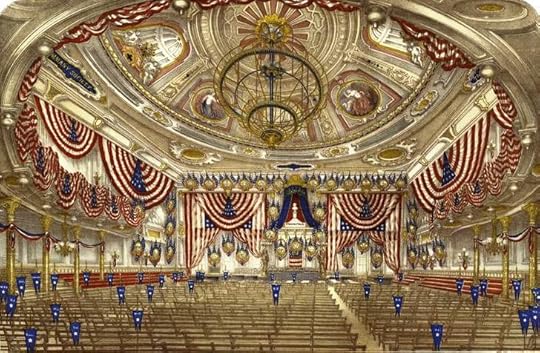
Tammany Hall, also called Tammany, the executive committee of the Democratic Party in New York City historically exercising political control through the typical boss-ist blend of charity and patronage. The name was derived from a pre-Revolutionary association named after Tammanend, a wise and benevolent Delaware Indian chief.
When Tammany was organized in New York in 1789, it represented middle-class opposition to the power of the “aristocratic” Federalist Party. Incorporated in 1805 as a benevolent body, the Society of Tammany became identified with the Democratic Party by means of identical leadership within both organizations.
The makeup of the society was substantially altered in 1817 when Irish immigrants, protesting Tammany bigotry, forced their right to membership and benefits. Later Tammany championed the spread of the franchise to white propertyless males. Nevertheless, the society’s appeal to particular ethnic and religious minorities, the doling out of gifts to the poor, and the bribing of rival political faction leaders, among them the notorious “Boss” William M. Tweed, made the name Tammany Hall synonymous with urban political corruption.
Tammany’s power was formidable in the 19th and early 20th centuries, but its control over New York politics was diminished when Pres. Franklin D. Roosevelt reduced its status to a county organization after it failed to support him in 1932. It further declined in power during the reform administrations of mayors Fiorello H. La Guardia (1933–45) and John V. Lindsay (1966–73). (Source: Encyclopedia Britannica)
More:
https://en.wikipedia.org/wiki/Tammany...
http://www.history.com/topics/tammany...
http://www.albany.edu/~dkw42/tweed.html
https://www.gwu.edu/~erpapers/teachin...
http://www.encyclopedia.com/topic/Tam...
http://history1800s.about.com/od/theg...
http://www.dictionary.com/browse/tamm...
http://legal-dictionary.thefreedictio...
http://www.u-s-history.com/pages/h705...
http://www.npr.org/2014/03/05/2862184...
http://www.newworldencyclopedia.org/e...
https://www.tenement.org/encyclopedia...
http://tammanyhallny.com/
http://www.nytimes.com/2014/01/18/opi...
https://www.awesomestories.com/asset/...
https://www.marxists.org/reference/ar...
http://americanhistory.si.edu/steinwa...
(no image) Tigers of Tammany;: Nine men who ran New York by Alfred Connable (no photo)
(no image) Tammany Hall And The New Immigrants: The Progressive Years by Thomas M. Henderson (no photo)
(no image) The Last of the Big-Time Bosses: The Life and Times of Carmine de Sapio and the Rise and Fall of Tammany Hall by Warren Moscow (no photo)
 by Terry Golway (no photo)
by Terry Golway (no photo) by Oliver E. Allen (no photo)
by Oliver E. Allen (no photo) by Charles La Cerra (no photo)
by Charles La Cerra (no photo) by Seymour J. Mandelbaum (no photo)
by Seymour J. Mandelbaum (no photo) by Warren Sloat (no photo)
by Warren Sloat (no photo)
 Jane Addams
Jane Addams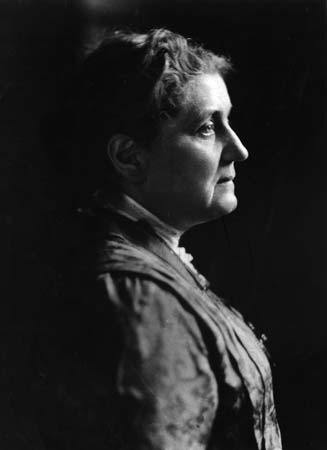
Jane Addams, (born September 6, 1860, Cedarville, Illinois, U.S.—died May 21, 1935, Chicago, Illinois).
American social reformer and pacifist, co-winner (with Nicholas Murray Butler) of the Nobel Prize for Peace in 1931. She is probably best known as the founder of Hull House in Chicago, one of the first social settlements in North America.
Among the facilities at Hull House were a day nursery, a gymnasium, a community kitchen, and a boarding club for working girls. Hull House offered college-level courses in various subjects, furnished training in art, music, and crafts such as bookbinding, and sponsored one of the earliest little-theatre groups, the Hull House Players. In addition to making available services and cultural opportunities for the largely immigrant population of the neighbourhood, Hull House afforded an opportunity for young social workers to acquire training.
Addams worked with labour as well as other reform groups toward goals including the first juvenile-court law, tenement-house regulation, an eight-hour working day for women, factory inspection, and workers’ compensation. She strove in addition for justice for immigrants and blacks, advocated research aimed at determining the causes of poverty and crime, and supported woman suffrage.
In 1910 she became the first woman president of the National Conference of Social Work, and in 1912 she played an active part in the Progressive Party’s presidential campaign for Theodore Roosevelt. At The Hague in 1915 she served as chairman of the International Congress of Women, following which was established the Women’s International League for Peace and Freedom. She was also involved in the founding of the American Civil Liberties Union in 1920.
The establishment of the Chicago campus of the University of Illinois in 1963 forced the Hull House Association to relocate its headquarters. The majority of its original buildings were demolished, but the Hull residence itself was preserved as a monument to Jane Addams.
Among Addams’s books are Democracy and Social Ethics (1902), Newer Ideals of Peace (1907), Twenty Years at Hull-House (1910), and The Second Twenty Years at Hull-House (1930). (Source: Encyclopedia Britannica)
More:
https://en.wikipedia.org/wiki/Jane_Ad...
http://www.nobelprize.org/nobel_prize...
http://www.biography.com/people/jane-...
http://www.history.com/topics/womens-...
http://www.hullhousemuseum.org/
http://www.historyofsocialwork.org/en...
http://ocp.hul.harvard.edu/ww/addams....
http://www.iep.utm.edu/addamsj/
http://plato.stanford.edu/entries/add...
http://www.americaslibrary.gov/aa/add...
http://www.americaslibrary.gov/aa/add...
http://www.encyclopedia.com/topic/Jan...
http://www.newworldencyclopedia.org/e...
http://www.janeaddamspeace.org/janead...
https://www.swarthmore.edu/library/pe...
(no image) The second twenty years at Hull-House, September 1909 to September 1929, with a record of a growing world consciousness by
 Jane Addams
Jane Addams by Robin K. Berson (no photo)
by Robin K. Berson (no photo) by Victoria Bissell Brown (no photo)
by Victoria Bissell Brown (no photo) by Allen F. Davis (no photo)
by Allen F. Davis (no photo) by
by
 Gioia Diliberto
Gioia Diliberto by
by
 Jane Addams
Jane Addams by
by
 Jane Addams
Jane Addams by
by
 Jane Addams
Jane Addams
 The Bull Moose Party
The Bull Moose Party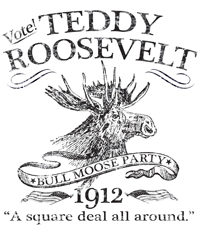
Bull Moose Party, formally Progressive Party.
U.S. dissident political faction that nominated former president Theodore Roosevelt as its candidate in the presidential election of 1912; the formal name and general objectives of the party were revived 12 years later.
Opposing the entrenched conservatism of the regular Republican Party, which was controlled by Pres. William Howard Taft, a National Republican Progressive League was organized in 1911 by Sen. Robert M. La Follette of Wisconsin. The group became the Progressive Party the following year and on August 7, 1912, met in convention and nominated Roosevelt for president and Gov. Hiram W. Johnson of California for vice president; it called for revision of the political nominating machinery and an aggressive program of social legislation.
The party’s popular nickname of Bull Moose was derived from the characteristics of strength and vigour often used by Roosevelt to describe himself. He waged an energetic campaign, during the course of which he was shot by an insane man in Milwaukee, Wisconsin, while on his way to make a speech. He went ahead with his address, telling the crowd that he had a bullet in his body but assuring them that “it takes more than that to kill a Bull Moose.”
The Bull Moose ticket polled some 25 percent of the popular vote. Thus split, the Republicans lost the election to the Democrats under Woodrow Wilson. The Bull Moose Party evaporated, and the Republicans were reunited four years later.
(Source: Encyclopedia Britannica)
More:
https://en.wikipedia.org/wiki/Progres...
http://americanhistory.about.com/od/p...
http://www.history.com/this-day-in-hi...
http://www.progressivebullmoose.party/
http://www.encyclopedia.com/topic/Bul...
http://www.usnews.com/news/the-report...
http://study.com/academy/lesson/bull-...
http://www.pbs.org/wgbh/americanexper...
https://memory.loc.gov/ammem/today/ju...
(no image) The Bull Moose Years: Theodore Roosevelt and the Progressive Party by John Allen Gable (no photo)
 by Francis L. Broderick (no photo)
by Francis L. Broderick (no photo) by James Chace (no photo)
by James Chace (no photo) by Brett Flehinger (no photo)
by Brett Flehinger (no photo) by Lewis L. Gould (no photo)
by Lewis L. Gould (no photo) by Lewis L. Gould (no photo)
by Lewis L. Gould (no photo) by
by
 Geoffrey Cowan
Geoffrey Cowan
 New Freedom
New Freedom
New Freedom, in U.S. history.
Political ideology of Woodrow Wilson, enunciated during his successful 1912 presidential campaign, pledging to restore unfettered opportunity for individual action and to employ the power of government in behalf of social justice for all.
Supported by a Democratic majority in Congress, Wilson succeeded during his first term in office (1913–17) in pushing through a number of meaningful measures: tariff reduction, banking regulations, antitrust legislation, beneficial farmer-labour enactments, and highway construction using state grants-in-aid.
In actual practice the Wilsonian program enacted most of the proposals of his main 1912 presidential opponent, Progressive candidate Theodore Roosevelt. By the extensive use of federal power to protect the common man, the New Freedom anticipated the centralized approaches of the New Deal 20 years later. (Source: Encyclopedia Britannica)
More:
https://en.wikipedia.org/wiki/The_New...
http://www.ushistory.org/us/43g.asp
http://www.gutenberg.org/files/14811/...
http://www.sparknotes.com/biography/w...
http://study.com/academy/lesson/woodr...
http://tdl.org/txlor-dspace/bitstream...
http://teachingamericanhistory.org/li...
http://www.loc.gov/pictures/item/2002...
http://www.jstor.org/stable/2145327?s...
http://press.princeton.edu/titles/144...
http://www.psqonline.org/article.cfm?...
http://www.jstor.org/stable/41205420?...
http://www.jstor.org/stable/2198322?s...
 by Jacob Kramer (no photo)
by Jacob Kramer (no photo) by James Chace (no photo)
by James Chace (no photo) by Brett Flehinger (no photo)
by Brett Flehinger (no photo) by Lewis L. Gould (no photo)
by Lewis L. Gould (no photo) by Arthur S. Link (no photo)
by Arthur S. Link (no photo) by Arthur S. Link (no photo)
by Arthur S. Link (no photo) by Arthur S. Link (no photo)
by Arthur S. Link (no photo) by
by
 Woodrow Wilson
Woodrow Wilson
 John Flammang Schrank
John Flammang Schrank
John Flammang Schrank (March 5, 1876 – September 15, 1943) was a resident of New York, best known for his attempt to assassinate former U.S. President Theodore Roosevelt on October 14, 1912 in Milwaukee, Wisconsin.
On October 14, 1912, while Theodore Roosevelt was campaigning in Milwaukee, Wisconsin, Schrank attempted to assassinate him. It is unclear when Schrank's interest in domestic politics grew to the point that he would attempt to kill Roosevelt. It is known that he was an opponent of a sitting President's ability to seek a third term in office.
According to documents found on Schrank after the attempted assassination, Schrank had written that he was advised by the ghost of William McKinley in a dream to avenge his death, pointing to a picture of Theodore Roosevelt. Different accounts claim that in the dream he instead saw McKinley rise from a coffin and point at Roosevelt, who was wearing a monk's robe.
Schrank did shoot Roosevelt, but the bullet lodged in Roosevelt's chest only after hitting both his steel eyeglass case and a 50-page copy of his speech he was carrying in his jacket. Roosevelt decided the bullet could not have penetrated to his lung because he coughed no blood and, declining suggestions that he go to the hospital, delivered his scheduled speech. He spoke for ninety minutes, but sometimes managed no more than a whisper.
Schrank maintained, later, that he had nothing against the man himself, and he did not intend to kill 'the citizen Roosevelt', but rather 'Roosevelt, the third-termer.' He claimed to have shot Roosevelt as a warning to other third-termers, and that it was the ghost of William McKinley that told him to perform the act. When Roosevelt died in 1919, Schrank conceded that he was a great American and was sorry to hear of his death.
Doctors soon examined him and reported that he was suffering from 'insane delusions, grandiose in character' and they declared Schrank to be insane.
Schrank was committed to the Central State Mental Hospital in Waupun, Wisconsin, in 1914. He remained there for 29 more years, until his death from natural causes in 1943. His body was donated to the Medical School at Marquette University (now the Medical College of Wisconsin) for anatomical dissection. (Source: Wikipedia)
More:
http://murderpedia.org/male.S/s/schra...
http://murderpedia.org/male.S/s/schra...
https://www.nps.gov/thrb/learn/histor...
https://symonsez.wordpress.com/tag/jo...
https://armedrobbery.wordpress.com/ta...
http://randall3.uncw.edu/ascod/?p=col...
http://www.gettyimages.com/event/year...
http://www.loc.gov/pictures/item/ggb2...
http://fatmanatee.tumblr.com/post/170...
http://worldfamousweapons.blogspot.hr...
 by Robert J. Donovan (no photo)
by Robert J. Donovan (no photo) by Dale L. June (no photo)
by Dale L. June (no photo) by John Boertlein (no photo)
by John Boertlein (no photo) by Gwenyth Swain (no photo)
by Gwenyth Swain (no photo) by
by
 Tim McNeese
Tim McNeese
 Federal Reserve Bank
Federal Reserve Bank
Map of the twelve Federal Reserve Districts
A Federal Reserve Bank is a regional bank of the Federal Reserve System, the central banking system of the United States. There are twelve in total, one for each of the twelve Federal Reserve Districts that were created by the Federal Reserve Act of 1913. The banks are jointly responsible for implementing the monetary policy set forth by the Federal Open Market Committee, and are divided as follows:
Federal Reserve Bank of Boston
Federal Reserve Bank of New York
Federal Reserve Bank of Philadelphia
Federal Reserve Bank of Cleveland
Federal Reserve Bank of Richmond
Federal Reserve Bank of Atlanta
Federal Reserve Bank of Chicago
Federal Reserve Bank of St. Louis
Federal Reserve Bank of Minneapolis
Federal Reserve Bank of Kansas City
Federal Reserve Bank of Dallas
Federal Reserve Bank of San Francisco
Some banks also possess branches, with the whole system being headquartered at the Eccles Building in Washington, D.C.
The First Bank of the United States was established in 1791, its charter signed by George Washington. The First Bank of the United States was headquartered in Philadelphia, but had branches in other major cities. The Bank performed the basic banking functions of accepting deposits, issuing bank notes, making loans and purchasing securities.
When its charter expired 20 years later, the United States was without a central bank for a few years, during which it suffered an unusual inflation. In 1816, James Madison signed the Second Bank of the United States into existence. When, in 1833, before that bank's charter expired, President Jackson removed the government funds as part of the Bank War, and the United States went without a central bank for 40 years.
A financial crisis known as the Panic of 1907 was headed off by a private conglomerate (led by J. P. Morgan), who set themselves up as "lenders of last resort" to banks in trouble. This effort succeeded in stopping the panic, and led to calls for a Federal agency to do the same thing.
In response to this, the Federal Reserve System was created by the Federal Reserve Act of December 23, 1913, establishing a new central bank intended to serve as a formal "lender of last resort" to banks in times of liquidity crisis—panics where depositors tried to withdraw their money faster than a normal fractional-reserve-based bank could pay it out. (Source: Wikipedia)
More:
http://www.sciencedirect.com/science/...
http://www.apfn.org/apfn/reserve.htm
http://www.john-f-kennedy.net/thefede...
http://www.investorwords.com/1912/Fed...
http://www.frbsf.org/education/teache...
https://www.newyorkfed.org/aboutthefe...
http://www.federalreservehistory.org/
https://www.stlouisfed.org/in-plain-e...
http://content.time.com/time/photogal...
https://www.corbettreport.com/federal...
https://www.bostonfed.org/about/pubs/...
http://www.scionofzion.com/federalres...
http://www.federalreserve.gov/
http://federalreserveonline.org/
http://www.investopedia.com/terms/f/f...
https://www.frbservices.org/aboutus/i...
https://www.federalreserveeducation.o...
http://www.usagold.com/federalreserve...
(no image) Money and the Federal Reserve system by G. Thomas Woodward (no photo)
 by A.M. Babkina (no photo)
by A.M. Babkina (no photo) by Gary H. Kah (no photo)
by Gary H. Kah (no photo) by James Livingston (no photo)
by James Livingston (no photo) by
by
 Brian O'Brien
Brian O'Brien by
by
 John Kenneth Galbraith
John Kenneth Galbraith by
by
 Eustace Mullins
Eustace Mullins
 Federal Reserve Act of 1913
Federal Reserve Act of 1913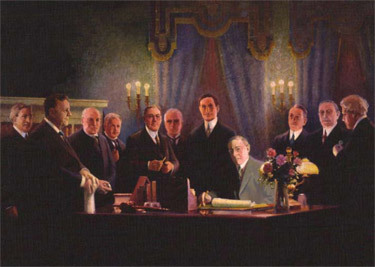
President Wilson signing the Federal Reserve Act, 1913
The Federal Reserve Act (ch. 6, 38 Stat. 251, enacted December 23, 1913, 12 U.S.C. ch. 3) is an Act of Congress that created and established the Federal Reserve System, the central banking system of the United States, and which created the authority to issue Federal Reserve Notes (now commonly known as the U.S. Dollar) and Federal Reserve Bank Notes as legal tender. The Act was signed into law by President Woodrow Wilson. (Source: Wikipedia)
More:
http://www.investopedia.com/terms/f/1...
http://www.federalreservehistory.org/...
https://www.federalreserve.gov/aboutt...
http://study.com/academy/lesson/the-f...
http://www.encyclopedia.com/topic/Fed...
https://fraser.stlouisfed.org/scribd/...
https://fraser.stlouisfed.org/docs/pu...
https://www.nolo.com/legal-encycloped...
https://www.federalreserveeducation.o...
http://www.publiceye.org/conspire/fla...
http://www.publiceye.org/conspire/fla...
http://www.senate.gov/artandhistory/h...
http://www.britannica.com/topic/Feder...
http://www.llsdc.org/FRA-LH
http://www.historycentral.com/documen...
https://www.richmondfed.org/~/media/r...
https://www.richmondfed.org/~/media/r...
http://www.bostonfed.org/about/pubs/b...
https://research.stlouisfed.org/publi...
http://journals.cambridge.org/action/...
http://www.journals.uchicago.edu/doi/...
https://www.kansascityfed.org/publica...
(no image) An Adventure in Constructive Finance by Carter Glass (no photo)
(no image) Banking Reform and the Federal Reserve, 1863-1923 by Robert Craig West (no photo)
 by Elmus Wicker (no photo)
by Elmus Wicker (no photo) by Gary H. Kah (no photo)
by Gary H. Kah (no photo) by
by
 Milton Friedman
Milton Friedman by
by
 Milton Friedman
Milton Friedman
 Clayton Anti-Trust Act of 1914
Clayton Anti-Trust Act of 1914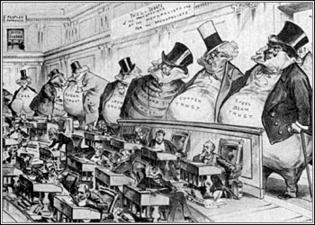
Clayton Antitrust Act, law enacted in 1914 by the United States Congress to clarify and strengthen the Sherman Antitrust Act (1890).
The vague language of the latter had provided large corporations with numerous loopholes, enabling them to engage in certain restrictive business arrangements that, though not illegal per se, resulted in concentrations that had an adverse effect on competition. Thus, despite the trust-busting activities of the administrations of Presidents Theodore Roosevelt and William Howard Taft under the Sherman Act, it appeared to a congressional committee in 1913 that big business had continued to grow bigger and that the control of money and credit in the country was such that a few men had the power to plunge the nation into a financial panic.
When President Woodrow Wilson asked for a drastic revision of existing antitrust legislation, Congress responded by passing the Clayton measure.
Whereas the Sherman Act only declared monopoly illegal, the Clayton Act defined as illegal certain business practices that are conducive to the formation of monopolies or that result from them. For example, specific forms of holding companies and interlocking directorates were forbidden, as were discriminatory freight (shipping) agreements and the distribution of sales territories among so-called natural competitors.
Two sections of the Clayton Act were later amended by the Robinson-Patman Act (1936) and the Celler-Kefauver Act (1950) to fortify its provisions. The Robinson-Patman amendment made more enforceable Section 2, which relates to price and other forms of discrimination among customers. The Celler-Kefauver Act strengthened Section 7, prohibiting one firm from securing either the stocks or the physical assets (i.e., plant and equipment) of another firm when the acquisition would reduce competition; it also extended the coverage of antitrust laws to all forms of mergers whenever the effect would substantially lessen competition and tend to create a monopoly.
Earlier legislative measures had simply restricted horizontal mergers—those involving firms that produce the same type of goods. In contrast, the Celler-Kefauver Act went farther by restricting even mergers of companies in different industries (i.e., conglomerate mergers).
The Clayton Act and other antitrust and consumer protection regulations are enforced by the Federal Trade Commission. (Source: Encyclopedia Britannica)
More:
https://en.wikipedia.org/wiki/Clayton...
http://www.infoplease.com/encyclopedi...
http://www.investopedia.com/terms/c/c...
http://www.encyclopedia.com/topic/Cla...
http://www.antitrustlaws.org/Clayton-...
https://www.ftc.gov/tips-advice/compe...
http://business-law.freeadvice.com/bu...
http://www.u-s-history.com/pages/h105...
http://history.house.gov/HistoricalHi...
http://www.jstor.org/stable/1068463?s...
http://www.jstor.org/stable/1068552?s...
http://www.stolaf.edu/people/becker/a...
(no image) An International Antitrust Primer by Earl W. Kintner (no photo)
 by Harold Underwood Faulkner (no photo)
by Harold Underwood Faulkner (no photo) by John Chamberlain (no photo)
by John Chamberlain (no photo) by Herbert Hovenkamp (no photo)
by Herbert Hovenkamp (no photo) by Martin J. Sklar (no photo)
by Martin J. Sklar (no photo) by LandMark Publications (no photo)
by LandMark Publications (no photo)
 Keating-Owen Act of 1916
Keating-Owen Act of 1916
The Keating-Owen Child Labor Act of 1916 also known as Wick's Bill, was a short-lived statute enacted by the U.S. Congress which sought to address child labor by prohibiting the sale in interstate commerce of goods produced by factories that employed children under fourteen, mines that employed children younger than sixteen, and any facility where children under fourteen worked after 7:00 p.m. or before 6:00 a.m. or more than 8 hours daily.
The Bill, accepted after its first failure to be enacted, was revised and re-introduced. The basis for the action was the constitutional clause giving Congress the task of regulating intrastate commerce. The Act specified that the U.S. Attorney General, the Secretary of State and the Secretary of Agriculture would convene a caucus to publish from time to time uniform rules and regulations to comply with the Act. To enforce the Act, the Secretary of Labor would assign inspectors to perform inspections of workplaces that produce goods for commerce. The inspectors would have the authority to make unannounced visits and would be given full access to the facility in question. Anyone found in acceptance of this Act or who gave false evidence would be subject to fines and/or imprisonment.
The bill was named for its sponsors, Edward Keating and Robert Latham Owen. The work of Alexander McKelway and the National Child Labor Committee (NCLC), it was signed into law by President Woodrow Wilson, who had lobbied heavily for its passage, in 1916 and went into effect September 1, 1917, but nine months later, in Hammer v. Dagenhart, 247 U.S. 251 (1918), the Act was ruled unconstitutional by the Supreme Court of the United States. (Source: Wikipedia)
More:
https://www.ourdocuments.gov/doc.php?...
https://www.ourdocuments.gov/doc.php?...
http://www.encyclopedia.com/doc/1G2-3...
https://historyengine.richmond.edu/ep...
http://occupytheory.org/the-keating-o...
https://www.docsteach.org/documents/d...
http://www.gilderlehrman.org/history-...
http://ic.galegroup.com/ic/uhic/Prima...
http://xroads.virginia.edu/~ma01/davi...
http://www.britannica.com/topic/Keati...
https://cb100.acf.hhs.gov/cb_eBrochur...
(no image) Crusade for the Children: A History of the National Child Labor Committee and Child Labor Reform in America, by Walter I. Trattner (no photo)
 by Sandy Hobbs (no photo)
by Sandy Hobbs (no photo) by Melvyn Dubofsky (no photo)
by Melvyn Dubofsky (no photo) by Rick Fantasia (no photo)
by Rick Fantasia (no photo) by Hugh D. Hindman (no photo)
by Hugh D. Hindman (no photo)
 New Deal
New Deal
New Deal, the domestic program of the administration of U.S. President Franklin D. Roosevelt between 1933 and 1939, which took action to bring about immediate economic relief as well as reforms in industry, agriculture, finance, waterpower, labour, and housing, vastly increasing the scope of the federal government’s activities.
The term was taken from Roosevelt’s speech accepting the Democratic nomination for the presidency on July 2, 1932. Reacting to the ineffectiveness of the administration of President Herbert Hoover in meeting the ravages of the Great Depression, American voters the following November overwhelmingly voted in favour of the Democratic promise of a “new deal” for the “forgotten man.”
Opposed to the traditional American political philosophy of laissez-faire, the New Deal generally embraced the concept of a government-regulated economy aimed at achieving a balance between conflicting economic interests. (Source: Encyclopedia Britannica)
More:
https://en.wikipedia.org/wiki/New_Deal
http://www.history.com/topics/new-deal
http://www.loc.gov/teachers/classroom...
http://www.shmoop.com/fdr-new-deal/su...
http://rooseveltinstitute.org/new-dea...
http://www.ushistory.org/us/49g.asp
http://www.fdrlibrary.marist.edu/educ...
http://home.earthlink.net/~gfeldmeth/...
http://www.pbs.org/wgbh/americanexper...
https://dp.la/exhibitions/exhibits/sh...
https://dp.la/exhibitions/exhibits/sh...
http://www.u-s-history.com/pages/h185...
https://web.stanford.edu/class/e297c/...
http://www.bbc.co.uk/schools/gcsebite...
http://americanhistory.about.com/od/g...
http://millercenter.org/president/bio...
http://www.digitalhistory.uh.edu/disp...
http://www.usnews.com/news/articles/2...
http://www.cato.org/publications/comm...
 by William E. Leuchtenburg (no photo)
by William E. Leuchtenburg (no photo) by William Henry Chafe (no photo)
by William Henry Chafe (no photo) by Robert Eden (no photo)
by Robert Eden (no photo) by Michael A. Hiltzik (no photo)
by Michael A. Hiltzik (no photo) by Sheila D. Collins (no photo)
by Sheila D. Collins (no photo) by Harvard Sitkoff (no photo)
by Harvard Sitkoff (no photo) by
by
 David M. Kennedy
David M. Kennedy by
by
 Anthony J. Badger
Anthony J. Badger
 The Adamson Act of 1916
The Adamson Act of 1916
The Adamson Act was a United States federal law passed in 1916 that established an eight-hour workday, with additional pay for overtime work, for interstate railroad workers.
The terms that were embodied in the act were negotiated by a committee of the four railroad labor brotherhoods of engineers, firemen, brakemen and conductors, chaired by Austin B. Garretson. Garretson was the respected leader of the conductors' union. He had formerly been a member of the President's Commission on Industrial Relations, investigating the causes of industrial violence. Congress passed the Act in order to avoid a nationwide strike.
Named for Georgia representative William C. Adamson, this was the first federal law that regulated the hours of workers in private companies. The United States Supreme Court upheld the constitutionality of the Act in 1917. When the railroads refused to abide by the law while their court challenge to its constitutionality was pending, the railway unions began preparing again to strike. The Supreme Court's decision brought the employers around, however, and they entered into settlement discussions concerning implementation of the law.
The unions' success spurred other railway employees not covered by the Act to press similar demands. Their negotiations were leading to a strike when President Woodrow Wilson, exercising the authority granted by the Army Appropriations Act of 1916, took over operation of the railroads on December 26, 1917. (Source: Wikipedia)
More:
https://www.loc.gov/rr/news/topics/ei...
http://www.encyclopedia.com/doc/1G2-3...
http://www.britannica.com/topic/Adams...
http://nhdprojectaimee.weebly.com/
http://historymatters.gmu.edu/d/6645/
http://history.house.gov/HistoricalHi...
http://www.woodrowwilson.org/educatio...
http://www.u-s-history.com/pages/h105...
http://www.worldhistory.biz/modern-hi...
https://news.google.com/newspapers?ni...
http://archives.chicagotribune.com/19...
https://prezi.com/vqqsez2ei2s8/copy-o...
 by Paul D. Moreno (no photo)
by Paul D. Moreno (no photo) by Rebecca Shoemaker (no photo)
by Rebecca Shoemaker (no photo) by Robert E. Weir (no photo)
by Robert E. Weir (no photo) by Julie Greene (no photo)
by Julie Greene (no photo) by K. Austin Kerr (no photo)
by K. Austin Kerr (no photo) by Gabriel Kolko (no photo)
by Gabriel Kolko (no photo) by Arthur S. Link (no photo)
by Arthur S. Link (no photo) by
by
 David M. Kennedy
David M. Kennedy
 Federal Employees' Compensation Act
Federal Employees' Compensation Act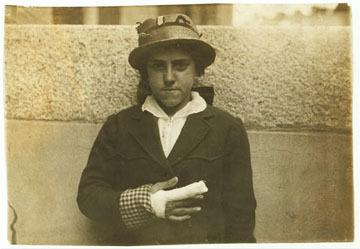
The Federal Employees' Compensation Act (FECA), is a United States federal law, enacted on September 7, 1916. Sponsored by Sen. John W. Kern of Indiana and Rep. Daniel J. McGillicuddy of Maine, it established compensation to federal civil service employees for wages lost due to job-related injuries. This act became the precedent for "disability insurance" across the country and the precursor to broad-coverage health insurance.
President Woodrow Wilson signed H.R. 15316 into law on September 7, 1916.
The Federal Employees' Compensation Commission was the original administrator of the FECA. However, the Commission did not exist at the time the FECA went into effect and claims accumulated for more than six months while members were selected and sworn into office. The Federal Employees' Compensation Commission officially began its duties on March 14, 1917. The Commission was abolished on May 16, 1946 by President Harry S. Truman as part of the Reorganization Act of 1939. Its duties were transferred to the Federal Security Agency on July 16, 1946. (Source: Wikipedia)
More:
https://www.dol.gov/owcp/dfec/regs/st...
http://www.bls.gov/mlr/1991/09/art1fu...
https://www.fas.org/sgp/crs/misc/R421...
http://www.ncbi.nlm.nih.gov/pubmed/19...
https://www.law.cornell.edu/wex/worke...
https://prezi.com/ubdedvxrrzws/workin...
http://study.com/academy/lesson/the-w...
https://cioccahistory.pbworks.com/w/p...
http://www.u-s-history.com/pages/h105...
http://www.pbs.org/wgbh/amex/wilson/p...
(no image) The Federal Employees' Compensation ACT (Feca): Workers' Compensation for Federal Employees by Scott Szymendera (no photo)
(no image) Federal Employees' Compensation ACT: Analysis of Benefits Under Proposed Program by Government Accountability Office (U S ) (no photo)
 by Addison K James (no photo)
by Addison K James (no photo) by United States Employees' Compensation (no photo)
by United States Employees' Compensation (no photo) by
by
 Alonzo L. Hamby
Alonzo L. Hamby
 Federal Income Tax
Federal Income Tax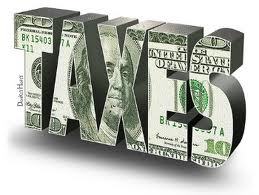
The origin of the income tax on individuals is generally cited as the passage of the 16th Amendment, passed by Congress on July 2, 1909, and ratified February 3, 1913; however, its history actually goes back even further.
During the Civil War Congress passed the Revenue Act of 1861 which included a tax on personal incomes to help pay war expenses. The tax was repealed ten years later. However, in 1894 Congress enacted a flat rate Federal income tax, which was ruled unconstitutional the following year by the U.S. Supreme Court because it was a direct tax not apportioned according to the population of each state. The 16th amendment, ratified in 1913, removed this objection by allowing the Federal government to tax the income of individuals without regard to the population of each State. (Source: The Library of Congress)
More:
https://en.wikipedia.org/wiki/Income_...
https://en.wikipedia.org/wiki/Taxatio...
https://www.treasury.gov/resource-cen...
http://www.infoplease.com/ipa/A000592...
http://taxfoundation.org/sites/defaul...
http://taxfoundation.org/article/us-f...
http://www.history.com/this-day-in-hi...
http://www.efile.com/tax-history-and-...
http://www.zerohedge.com/news/2013-04...
http://usgovinfo.about.com/od/incomet...
http://bradfordtaxinstitute.com/Free_...
(no image) American Taxation Its History as a Social Force by Sidney Ratner (no photo)
 by Richard J. Joseph (no photo)
by Richard J. Joseph (no photo) by Stephen Fox (no photo)
by Stephen Fox (no photo) by W. Elliot Brownlee (no photo)
by W. Elliot Brownlee (no photo) by David F. Burg (no photo)
by David F. Burg (no photo) by
by
 Joseph J. Thorndike
Joseph J. Thorndike
 John Davison "Jay" Rockefeller IV
John Davison "Jay" Rockefeller IV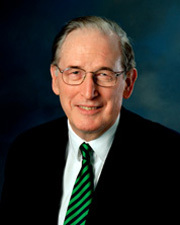
ROCKEFELLER, John Davison IV (Jay), (nephew of Nelson Aldrich Rockefeller, great-grandson of Nelson Aldrich, and son-in-law of Charles Harting Percy), a Senator from West Virginia; born in New York City, June 18, 1937; graduated, Phillips Academy, Exeter, N.H., 1954; graduated, Harvard University 1961; VISTA volunteer, Emmons, W. Va., 1964-1966; member, West Virginia house of delegates 1966-1968; secretary of State of West Virginia 1968-1972; president, West Virginia Wesleyan College 1973-1976; Governor of West Virginia 1977-1985; elected as a Democrat to the United States Senate in 1984 and began service on January 15, 1985; reelected in 1990, 1996, 2002, and again in 2008, and served from January 15, 1985, to January 3, 2015; chair, Committee on Veterans’ Affairs (One Hundred Third Congress, One Hundred Seventh Congress [January 3-20, 2001; June 6, 2001-January 3, 2003]), Select Committee on Intelligence (One Hundred Tenth Congress), Committee on Commerce, Science and Transportation (One Hundred Eleventh to One Hundred Thirteenth Congresses); vice-chair, Select Committee on Intelligence (One Hundred Eighth Congress); was not a candidate for reelection in 2014. (Source: Biographical Directory of the U.S. Congress)
More:
https://en.wikipedia.org/wiki/Jay_Roc...
http://www.cfr.org/experts/asia-and-p...
https://www.geni.com/people/Jay-Rocke...
http://www.politico.com/story/2013/01...
http://leadersfame.com/JayRockefeller
http://www.gutenberg.us/articles/john...
https://www.yahoo.com/news/us-sen-jay...
https://mic.com/articles/78639/these-...
http://www.people.com/people/archive/...
http://conservativeamerica-online.com...
(no image) The Rockefeller Century by John Ensor Harr (no photo)
 by Congressional Quarterly (no photo)
by Congressional Quarterly (no photo) by David E. Newton (no photo)
by David E. Newton (no photo) by Robert F. Dalzell Jr. (no photo)
by Robert F. Dalzell Jr. (no photo) by Richard Grimes (no photo)
by Richard Grimes (no photo) by
by
 Haynes Johnson
Haynes Johnson
 Nelson Aldrich Rockefeller
Nelson Aldrich Rockefeller
Born in Maine on July 8, 1908, Nelson Rockefeller was a grandson of John D. Rockefeller Sr., founder of Standard Oil, and the son of John D. Rockefeller Jr.
After working in business and government, in 1958, Nelson Rockefeller was elected governor of New York, serving four terms. Later, in 1974, he was appointed vice president of the United States by President Gerald Ford.
An avid art collector and patron, Nelson Rockefeller died in New York City in 1979. A wing of New York's Metropolitan Museum of Art is named in his honor.
(Source: Biography.com)
More:
https://en.wikipedia.org/wiki/Nelson_...
http://www.britannica.com/biography/N...
http://www.senate.gov/artandhistory/h...
http://www.pbs.org/wgbh/americanexper...
https://www.geni.com/people/Nelson-Al...
http://www.nydailynews.com/new-york/n...
http://www.encyclopedia.com/topic/Nel...
 by Richard Norton Smith (no photo)
by Richard Norton Smith (no photo) by Joseph H. Boyd (no photo)
by Joseph H. Boyd (no photo) by Gerard Colby (no photo)
by Gerard Colby (no photo) by Robert H. Connery (no photo)
by Robert H. Connery (no photo) by Michael S. Kramer (no photo)
by Michael S. Kramer (no photo)
 Vladimir Lenin
Vladimir Lenin
Vladimir Ilyich Ulyanov, alias Lenin ( 22 April 1870 – 21 January 1924), was a Russian communist revolutionary, politician, and political theorist. He served as head of government of the Russian Republic from 1917 to 1918, of the Russian Soviet Federative Socialist Republic from 1918 to 1924, and of the Soviet Union from 1922 to 1924. Under his administration, Russia and then the wider Soviet Union became a one-party communist state governed by the Russian Communist Party. Ideologically a Marxist, his political theories are known as Leninism. (Source: Wikipedia)
More:
http://www.biography.com/people/vladi...
http://www.bbc.co.uk/history/historic...
http://www.britannica.com/biography/V...
http://www.encyclopedia.com/topic/Vla...
http://www.notablebiographies.com/Ki-...
http://russiapedia.rt.com/prominent-r...
 by Jonathan Aves (no photo)
by Jonathan Aves (no photo) by Sebastian Budgen (no photo)
by Sebastian Budgen (no photo) by Louis Fischer (no photo)
by Louis Fischer (no photo) by Stephen J. Lee (no photo)
by Stephen J. Lee (no photo) by Yuri Felshtinsky (no photo)
by Yuri Felshtinsky (no photo)
Books mentioned in this topic
The Life of Lenin (other topics)Lenin and Revolutionary Russia (other topics)
Workers Against Lenin: Labour Protest and the Bolshevik Dictatorship (other topics)
Lenin and His Comrades (other topics)
Lenin Reloaded: Toward a Politics of Truth (other topics)
More...
Authors mentioned in this topic
Stephen J. Lee (other topics)Sebastian Budgen (other topics)
Louis Fischer (other topics)
Jonathan Aves (other topics)
Yuri Felshtinsky (other topics)
More...




Journalist Henry L. Stoddard was born in New York City, and educated at CCNY. He worked as a journalist in New York, Philadelphia, and Washington, D.C., before becoming editor and part owner of the New York Evening Mail. He also wrote several monographs about political figures, and a biography of Horace Greeley. (Source: snac)
More:
https://www.nypl.org/sites/default/fi...
http://www.granthomepage.com/intstodd...
https://www.geni.com/people/Henry-Sto...
http://www.vintagememorabilia.com/ind...
https://beta.worldcat.org/archivegrid...
https://www.unz.org/Pub/SaturdayRev-1...
http://archives.chicagotribune.com/19...
http://archives.lib.siu.edu/index.php...
https://www.unz.org/Pub/StoddardHenry...
http://www.worldcat.org/identities/lc...
(no image) Horace Greeley: Printer, Editor, Cursador by Henry Luther Stoddard (no photo)
(no image) Theodore Roosevelt, the Man: Some Memories of the Greatest American of His Time ... Reprinted from a Series of Articles Published in the New York Evening Mail, January 6 to 11, 1919 by Henry Luther Stoddard (no photo)
(no image) Newsmen Speak: Journalists on Their Craft by Edmond D. Coblentz (no photo)